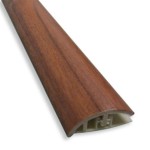When installing vinyl plank flooring, you will need to consider the implications of using an underlayment. Underlayment can help you to achieve a more comfortable and durable floor, and it can also help to reduce any issues that might come up with installation. This article will cover everything you need to know about underlayment for vinyl plank flooring so you can make an informed decision.
What Is Underlayment?
Underlayment is a material that is placed between the vinyl plank flooring and the subfloor. It is designed to provide a cushion for the floor and to keep the vinyl planks from shifting or cracking. Underlayment can also help to reduce noise and absorb moisture, providing a more comfortable and durable floor.
Types of Underlayment
There are several different types of underlayment that can be used for vinyl plank flooring. The most common type of underlayment is foam. Foam underlayment is inexpensive and provides good cushioning. It is also easy to install and can be used with any type of vinyl plank flooring.
Other types of underlayment include felt, cork, and rubber. Felt underlayment is more expensive than foam, but it provides better sound absorption and cushioning. Cork underlayment is also more expensive than foam, but it can provide better insulation and moisture control. Rubber underlayment is the most expensive type of underlayment, but it is very durable and provides the best sound absorption and cushioning.
Benefits of Using Underlayment
Underlayment has several benefits when it comes to vinyl plank flooring. It can help to reduce noise, provide cushioning, and increase the durability of the floor. It also helps to reduce any issues that might come up with installation. Here are some of the main benefits of using underlayment for vinyl plank flooring:
- Reduces noise
- Provides cushioning
- Increases durability
- Reduces installation issues
- Improves insulation
- Improves moisture control
How to Install Underlayment For Vinyl Plank Flooring
Installing underlayment for vinyl plank flooring is relatively easy. First, you will need to make sure that the subfloor is clean and level. Then, you will need to measure the area and cut the underlayment to size. Finally, you will need to lay the underlayment down and secure it to the subfloor with adhesive or nails. The process is relatively simple, but it is important to make sure that the underlayment is installed properly so that it can provide the necessary cushioning and protection for the vinyl plank flooring.
Conclusion
Underlayment is an important part of the installation process for vinyl plank flooring. It can help to reduce noise, provide cushioning, and increase the durability of the floor. It also helps to reduce any issues that might come up with installation. There are several different types of underlayment that can be used for vinyl plank flooring, and it is important to choose the right one for your needs. Installing underlayment is relatively easy, but it is important to make sure that it is done properly.






![]()






.jpg?resizeid=11&resizeh=596&resizew=865)
![]()
Related Posts








